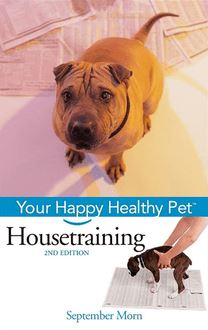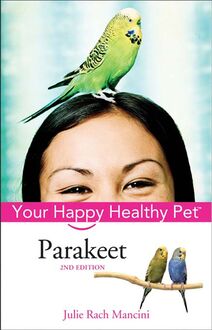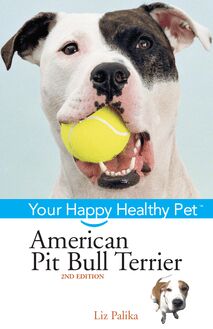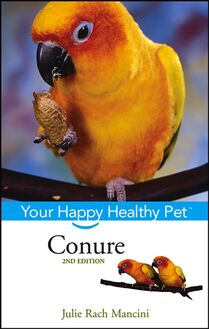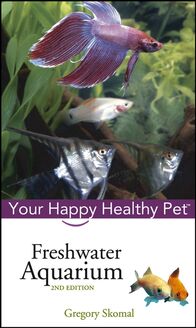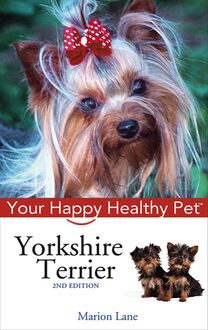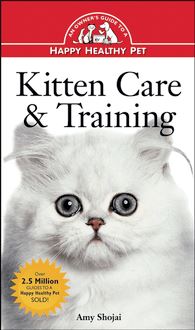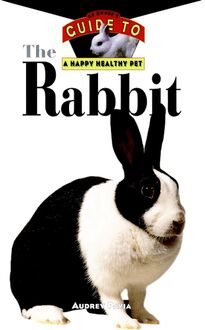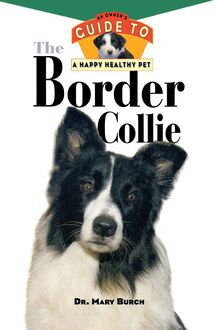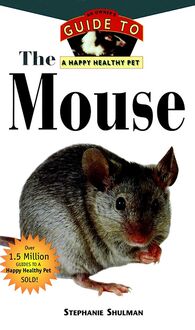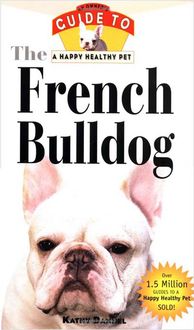-
 Univers
Univers
-
 Ebooks
Ebooks
-
 Livres audio
Livres audio
-
 Presse
Presse
-
 Podcasts
Podcasts
-
 BD
BD
-
 Documents
Documents
-
- Cours
- Révisions
- Ressources pédagogiques
- Sciences de l’éducation
- Manuels scolaires
- Langues
- Travaux de classe
- Annales de BEP
- Etudes supérieures
- Maternelle et primaire
- Fiches de lecture
- Orientation scolaire
- Méthodologie
- Corrigés de devoir
- Annales d’examens et concours
- Annales du bac
- Annales du brevet
- Rapports de stage
La lecture à portée de main
Vous pourrez modifier la taille du texte de cet ouvrage
Découvre YouScribe en t'inscrivant gratuitement
Je m'inscrisDécouvre YouScribe en t'inscrivant gratuitement
Je m'inscrisEn savoir plus
Vous pourrez modifier la taille du texte de cet ouvrage
En savoir plus

Description
The Pug is written by a breed expert and includes a special chapter on training by Dr. Ian Dunbar, internationally renowned animal behaviorist, and chapters on getting active with your dog by long-time Dog Fancy magazine columnist Bardi McLennan. Best of all, the book is filled with info-packed sidebars and fun facts to make caring for your pet easy and enjoyable.
Sujets
Informations
| Publié par | Turner Publishing Company |
| Date de parution | 01 octobre 1996 |
| Nombre de lectures | 0 |
| EAN13 | 9780470370575 |
| Langue | English |
| Poids de l'ouvrage | 1 Mo |
Informations légales : prix de location à la page 0,0648€. Cette information est donnée uniquement à titre indicatif conformément à la législation en vigueur.
Extrait
The
Pug
Howell Book House
Hungry Minds, Inc.
909 Third Avenue
New York, NY 10022
www.hungryminds.com
Copyright 1996, 2001 Howell Book House , a wholly owned subsidiary of Hungry Minds, Inc.
All rights reserved. No part of this book may be reproduced or transmitted in any form or by any means, electronic or mechanical, including photocopying, recording, or by an information storage and retrieval system, without permission in writing from the Publisher.
Howell Book House is a registered trademark of Hungry Minds, Inc.
For general information on Hungry Minds books in the U.S., please call our Consumer Customer Service department at 800-762-2974. In Canada, please call (800) 667-1115. For reseller information, including discounts and premium sales, please call our Reseller Customer Service department at 800-434-3422.
Library of Congress Cataloging-in-Publication Data
Patterson, Edward.
The pug: an owner s guide to happy, healthy pet/Edward Patterson.
p.cm.
Includes bibliographical references
ISBN 0-87605496-3
1. Pug. I. Title.
SF429.P9P38 1996, 2001 96-22140
636.7 6-dc20 CIP
Manufactured in the United States of America
10 9
Series Director: Kira Sexton
Book Design: Michele Laseau
Cover Design: Michael Freeland
Photography Editor: Richard Fox
Illustration: Jeff Yesh
Photography:
Front cover photo by Paulette Braun/Pets by Paulette
Back cover photo by Mary Bloom
Joan Balzarini: 96
Mary Bloom: 96, 136, 145
Paulette Braun/Pets by Paulette: 2-3, 7, 9, 11, 19, 20, 23, 24, 34-35, 41, 51, 56, 92, 96
Bucldnghamhill American Cocker Spaniels: 148
Sian Cox: 25, 39, 57, 134
Dr. Ian Dunbar: 98, 101, 103, 111, 116-117, 122, 123, 127
Andrew Giangola: 26
Dan Lyons: 96
Cathy Merrithew: 129
Liz Palika: 133
Edward and Charlotte Patterson: 27, 28, 36, 37, 58
Cheryl Primeau: 48, 59, 60
Susan Rezy: 18, 96-97
Judith Strom: 53, 66, 75, 96, 107, 110, 128, 130, 135, 137, 139, 140, 144, 149, 150
Faith Uridel: 5, 8, 62, 67
Jean Wentworth: 42, 46, 84
Page creation by: Hungry Minds Indianapolis Production Department
Contents
part one
Welcome to the World of the Pug
1 What Is a Pug?
2 The Pug s Ancestry
3 The World According to the Pug
part two
Living with a Pug
4 Bringing Your Pug Home
5 Feeding Your Pug
6 Grooming Your Pug
7 Keeping Your Pug Healthy
part three
Enjoying Your Dog
8 Basic Training
by Ian Dunbar, Ph.D., MRCVS
9 Getting Active with Your Dog
by Bardi McLennan
10 Your Dog and Your Family
by Bardi McLennan
11 Your Dog and Your Community
by Bardi McLennan
part four
Beyond the Basics
12 Recommended Reading
13 Resources
part one
External Features of the Pug
chapter 1
What Is a Pug?
Oh, lovely and most charming Pug Thy graceful air and heavenly mug The beauties of your mind do shine And every bit is shaped so fine Your tail is most divine.
-Marjorie Fleming
This little nineteenth-century poem, penned by a very young English lady, Marjorie Fleming, shortly before her death at the age of eight, tells us with admirable simplicity what a Pug can mean to its owner.
But what exactly is a Pug? What makes a Pug so unique, so different from a Boston Terrier, a Pekingese, or a French Bulldog?
The Standard
In 1885, an American standard for the Pug was composed. This standard describes the ideal Pug. No animal actually lives up to the standard in every way, but breeders keep trying to come as close to this description as possible.
Welcome to the World of the Pug
The Pug standard is closely copied from one previously written by the Kennel Club in England. Since 1885, a few additions have been made by the Pug Dog Club of America and approved by the American Kennel Club (AKC), but the original standard is basically unchanged.
WHAT IS A BREED STANDARD?
A breed standard-a detailed description of an individual breed-is meant to portray the ideal specimen of that breed. This includes ideal structure, temperament, gait, type-all aspects of the dog. Because the standard describes an ideal specimen, it isn t based on any particular dog. It is a concept against which judges compare actual dogs and breeders strive to produce dogs. At a dog show, the dog that wins is the one that comes closest, in the judge s opinion, to the standard for its breed. Breed standards are written by the breed parent clubs, the national organizations formed to oversee the well-being of the breed. They are voted on and approved by the members of the parent clubs.
In the following discussion of the Pug Dog standard, the official AKC standard appears in italics. The author s comments follow in regular type. (For a copy of the complete standard, write to the Pug Dog Club of America. See page 33 for the address.)
General Appearance
Symmetry and general appearance are decidedly square and cobby .
A Pug is square. Not literally, of course, but when we look at a Pug from any angle we should get an impression of squareness. The height at the shoulders should be about the same distance as the length from the front of his chest to the rear.
S IZE , P ROPORTION , S UBSTANCE
The Pug should be multum in parvo and this condensation of form is shown by compactness of form, well knit proportions and hardness of developed muscle .
Multum in parvo is a Latin phrase every Pug owner should know. Translated freely, it means that there is a great deal in a little package-a compact, well-proportioned little dog with a big heart.
HEAD
The head is large, massive, round. The eyes are dark in color, very large, bold and prominent .
The Pug s crowning glory is the head, round when viewed in profile, square when viewed from the front. Velvety black ears fall to about eye level. The large, round, dark eyes look at you in a soft, pleading, quizzical way, but come alive with excitement during playtime. The muzzle is broad, to match the breadth of the skull and, when his mouth is closed, you should see neither teeth nor tongue. Best of all are the wrinkles around the face, covering his brow and looping over his black nose, contributing so much to his characteristic expression.
In a dog show, a Pug is judged on how closely he conforms to the breed standard .
N ECK , T OPLINE , B ODY
The neck is strong and thick with enough length to carry the head proudly. The short back is level from the withers to the high tail set. The body is cobby, wide in chest and well ribbed up .
This is self-explanatory when you look at a correct Pug. The withers are the shoulders, and cobby means compact.
F OREQUARTERS
The legs are very strong, straight, of moderate length, and are set well under. The shoulders are moderately laid back .
Standing in front of our Pug, we see straight, sturdy legs coming down from broad shoulders and chest, forming a square. We do not want to see a bowed front and feet turned outward like a Bulldog.
Welcome to the World of the Pug
Moving around to the side of our Pug, we see a broad, strong neck curving slightly just behind the skull and merging smoothly into the shoulders. The legs should be directly under the shoulders and the full, rounded chest should protrude well forward of the legs. The topline, from shoulders to tail, should be straight and level, the tail set high and curled tightly over either hip. The rear legs should look strong, and when viewed from the side, be moderately bent and parallel to each other when viewed from the rear. The buttocks should be broad, emphasizing the dog s squareness even when viewed from above.
A Pug s body should give the overall impression of being square .
C OAT
The coat is fine, smooth, short and glossy, neither hard nor woolly .
In either color-black or fawn-the Pug s coat should be short and should feel smooth and soft to the touch, neither hard nor coarse.
C OLOR
The colors are silver, apricot-fawn or black. The silver or apricot-fawn colors should be decided so as to make the contrast complete between the color and the trace and the mask .
Pugs usually come in one of two colors: black and fawn. Black Pugs should have a shiny, jet-black coat and very dark eyes. Occasionally, you will see a white mark or blaze on the chest or paws. This is considered a mismark and is inherited from a strain of black Pugs originating in China. Although it is not preferable, it does not affect the overall beauty of the dog. Fawns also will occasionally have a white mark but, as it more easily blends into the lighter coat, it is much less apparent. Except for color, there should be no difference between black and fawn Pugs. Fawns do outnumber blacks to a considerable degree, perhaps as much as ten to one.
Black Pugs are not uncommon, though fawn Pugs outnumber them by ten to one .
One factor that may account for the popularity of the fawn over the black Pug is the fawn s markings. Its muzzle is-or should be-jet black, as should its ears, the moles on its cheeks and its nails. Most desirable also is a darkened spot centered on the forehead known as a thumbmark or diamond. The line between the black muzzle and the lighter colored upper face should be quite distinct.
The rolls of skin that form along the neck and throat are a distinctive feature of the Pug, though the standard makes no mention of them .
The chin and muzzle of most Pugs will begin graying anywhere between two and six years of age.
The standard also mentions a silver coat, a color which has become quite rare in the United States, though perhaps less so elsewhere. A silver coat has been compared to the color of moonlight, in contrast to the sunlike color of the true fawn. Silver is devoid of any brightness. There is a tendency to confuse silver with smutty fawn.
Welcome to the World of the Pug
L OOSE S KIN
Pugs generally have loose skin that sometimes forms rolls of flesh around the throat, over the shoulders and down the back. These rolls usually become more pronounced with advancing age. The standard makes no mention of t
-
 Univers
Univers
-
 Ebooks
Ebooks
-
 Livres audio
Livres audio
-
 Presse
Presse
-
 Podcasts
Podcasts
-
 BD
BD
-
 Documents
Documents
-
Jeunesse
-
Littérature
-
Ressources professionnelles
-
Santé et bien-être
-
Savoirs
-
Education
-
Loisirs et hobbies
-
Art, musique et cinéma
-
Actualité et débat de société
-
Jeunesse
-
Littérature
-
Ressources professionnelles
-
Santé et bien-être
-
Savoirs
-
Education
-
Loisirs et hobbies
-
Art, musique et cinéma
-
Actualité et débat de société
-
Actualités
-
Lifestyle
-
Presse jeunesse
-
Presse professionnelle
-
Pratique
-
Presse sportive
-
Presse internationale
-
Culture & Médias
-
Action et Aventures
-
Science-fiction et Fantasy
-
Société
-
Jeunesse
-
Littérature
-
Ressources professionnelles
-
Santé et bien-être
-
Savoirs
-
Education
-
Loisirs et hobbies
-
Art, musique et cinéma
-
Actualité et débat de société
- Cours
- Révisions
- Ressources pédagogiques
- Sciences de l’éducation
- Manuels scolaires
- Langues
- Travaux de classe
- Annales de BEP
- Etudes supérieures
- Maternelle et primaire
- Fiches de lecture
- Orientation scolaire
- Méthodologie
- Corrigés de devoir
- Annales d’examens et concours
- Annales du bac
- Annales du brevet
- Rapports de stage
